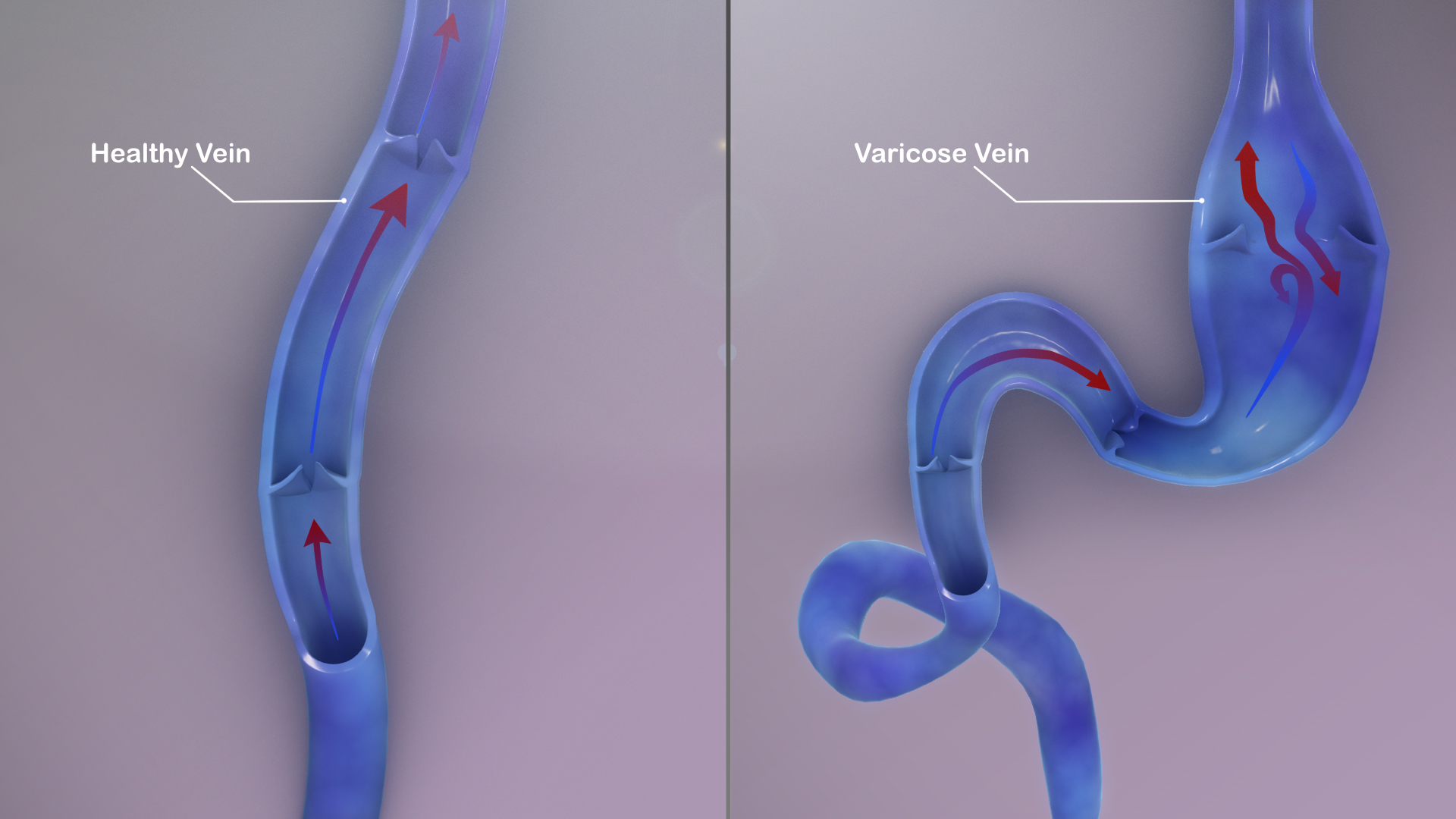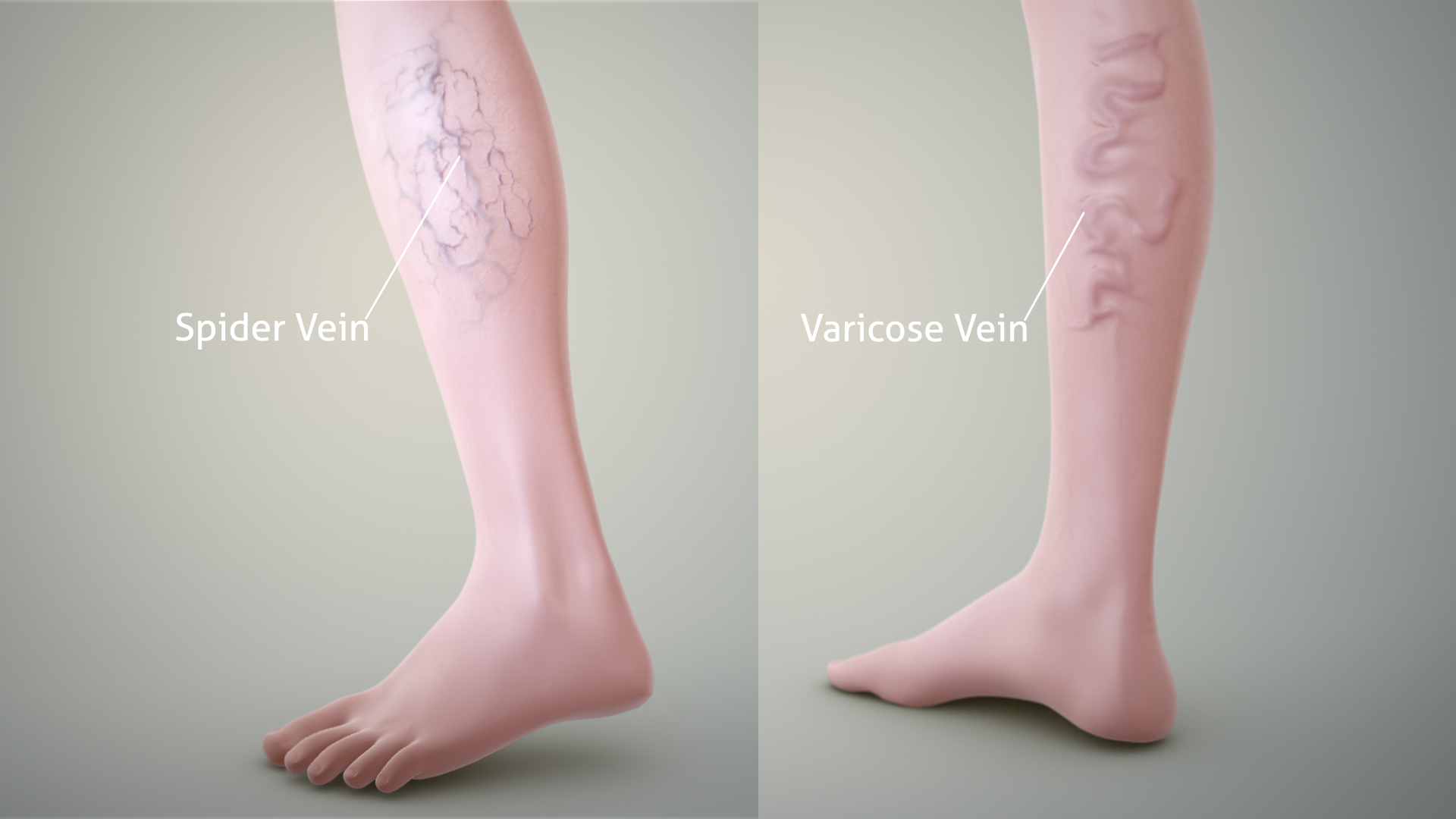Enter summer and it’s time to flaunt picture-perfect legs in cool shorts and skirts. So certainly, spotting a noticeable mesh of blue-red veins in your legs could be a nightmare.
Varicose veins seemingly affect more than 80 million adult Americans.
Varicose and spider veins are the same disease process which differ in severity and size. Spider veins are smaller (1-3 mm) and appear bluish red under the skin, while varicose veins are larger and more dilated veins which typically bulge out above the skin level.
However, the cause of both the conditions is the same- venous hypertension. Also sometimes referred to as chronic venous insufficiency or venous reflux disease, the term basically implies increased pressure within the vein, which is usually because of the failure of the valvular system of veins.
| Spider veins | Varicose veins |
| small, thin blue blood vessels that can be seen under the skin | stretched-out veins where blood has pooled |
| usually harmless | thick, "ropey" and protrude out of legs |
| can be a symptom of poor circulation and varicose vein formation | occur when one-way valves don't work properly |
How do they occur?
Our calf muscles contract every time we take a step forward, and that squeezes on the veins in the leg, pumping the blood against gravity, i.e, from the leg back to the heart.
While relaxing, of course, the gravity tends to pull the blood back into the leg. To prevent that from happening, a valve is present in the veins which pops open when blood needs to exit the leg and snaps shut when gravity pulls the blood back in the leg. But for reasons like weight, sedentary lifestyle, long standing hours, these valves become dysfunctional, allowing gravity to continuously pull the blood towards the leg, and therefore, raising the pressure on all superficial veins, causing them to dilate over time. In fact, anything that increases pressure in your abdomen can lead to varicose veins, including excess fat.
Pregnancy is another factor that exerts pressure against the inferior vena cava responsible for draining blood from the lower half of the body. Even the fetus in certain positions can practically block the flow of blood. Moreover, hormones are produced in excess during pregnancy, causing the veins to dilate, increasing their storage capacity, and therefore, the risk of spider veins.
To summarize, a number of factors may contribute to the development of spider veins in the legs, including:
- Heredity
- Hormone fluctuations
- Jobs requiring prolonged sitting or standing
- Pregnancy
- Drastic and sudden weight changes
Varicose veins and spider veins develop more often in women than in men. They increase in frequency with age.
So, besides cosmetic issues, are there any other problems linked to the condition?
Though in most cases, varicose veins are not a health issue, they shouldn't be neglected. Varicose veins cause swelling, fatigue and general discomfort in the legs. They can also be a warning of long-term health risks including: deep vein thrombosis, blood clots, poor circulation and leg swelling.
Some patients can progress to more serious forms of venous disease, such as lipodermatosclerosis, which is characterized by the thickening of the skin. Aching, burning, or swelling of the legs is common.
In very severe cases ulcers and wounds can result because of the pressure on the skin, however, it’s a rare occurrence.
Seeing a doctor for varicose veins is recommended in cases when:
- The vein has become swollen, red, tender or warm to the touch
- There are sores or a rash on the leg or near the ankle
- The ankle skin and calf becomes thick and changes color
- One of the varicose veins begins to bleed
- Your leg symptoms are interfering with daily activities
- The appearance of the veins is distressing
This is how you can cure Lipomas
A lipoma is a slow-growing, benign, adipose tumor, often found in the subcutaneous tissues. Lipomas may also occur in deeper tissues such as the intermuscular septa, Read More..










